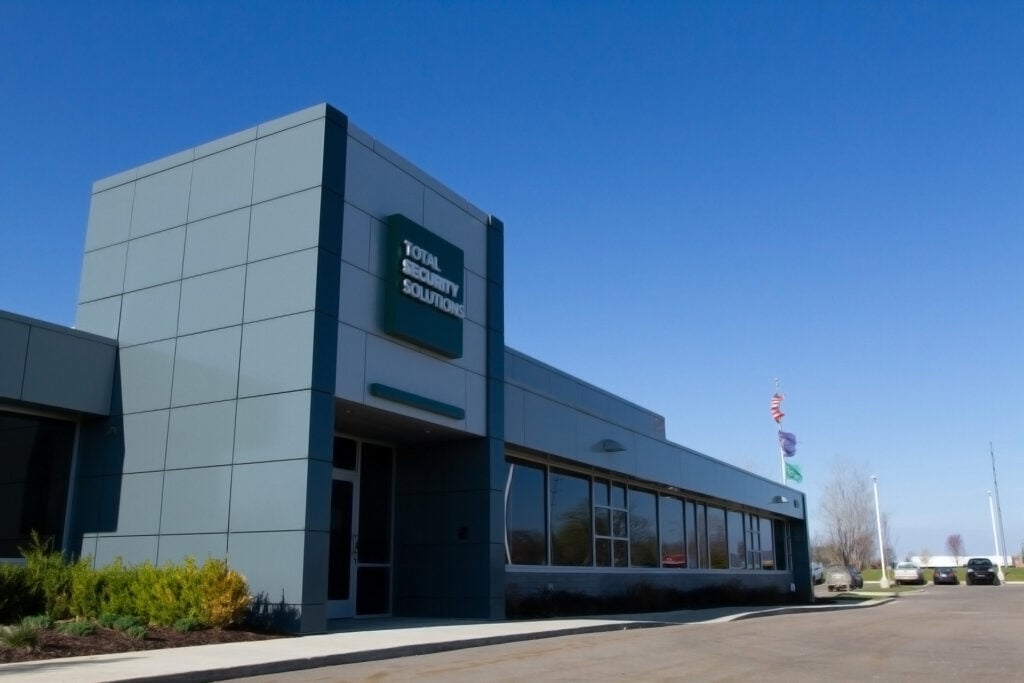Bulletproof & Bullet-Resistant Framing
Support your bulletproof barrier system with bullet-resistant frames from TSS.
Understanding Framing for Your Ballistic Door or Window
Bullet-resistant framing is an important aspect of your bulletproof barrier system. While ballistic windows and doors are key focal points, the framing supports the entire system’s weight, protects the spaces between doors and windows, and helps the barrier blend in with the surrounding space. Like ballistic glazing and other types of material, frames are rated according to the UL-752 Standard for Bullet-Resistant Materials.
UL rating recommendations vary by project and facility. However, we generally recommend:
- Level 1-2: gas stations, banks, healthcare, and retail buildings.
- Level 3: schools, courtrooms, police stations, and local government facilities.
- Levels 4-8: federal government and military facilities.
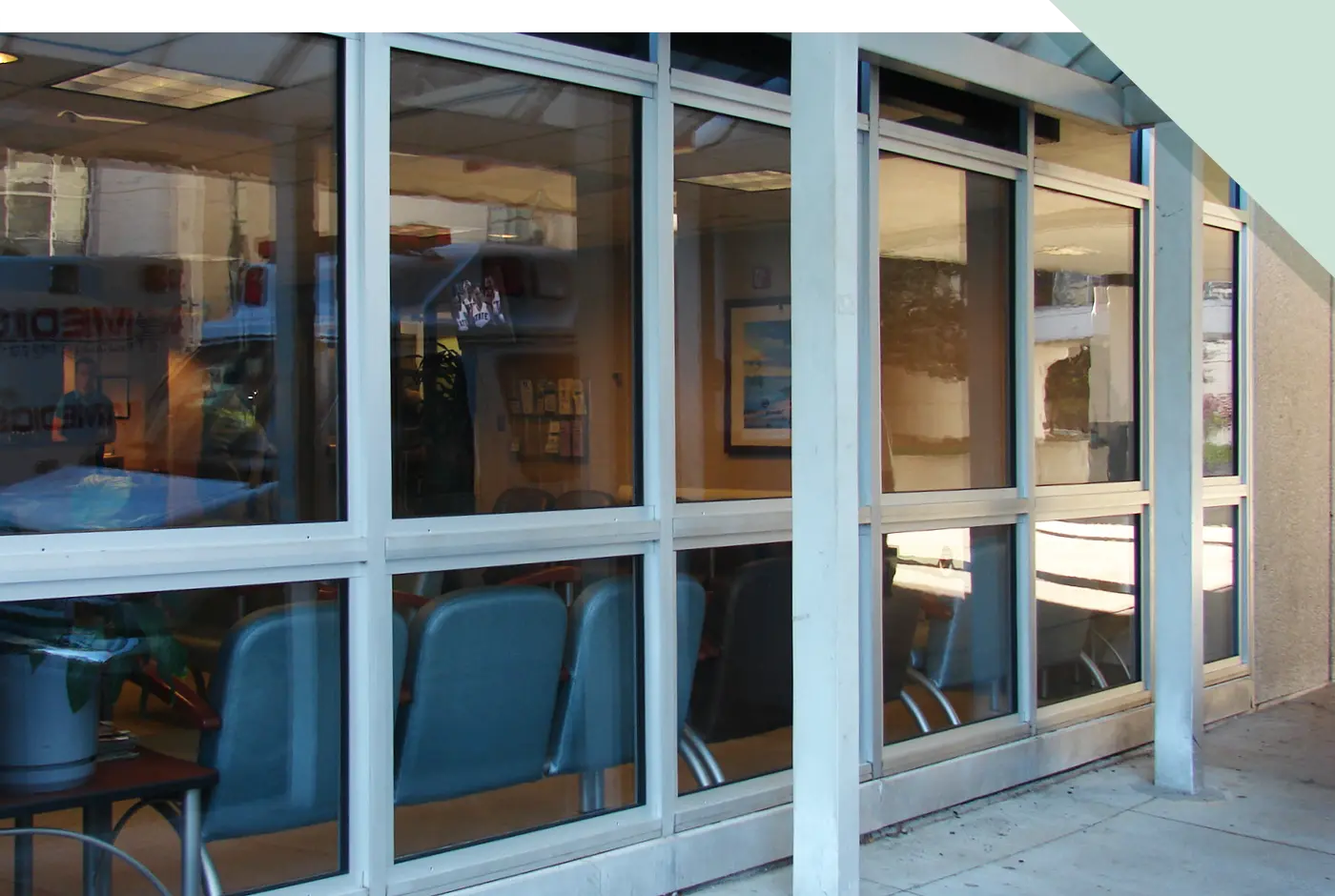
Three Types of Bullet-Resistant Frames
TSS offers three types of bulletproof frames. The kind of framing that’s right for your project depends on security goals, aesthetics, and the other materials of your system. Our ballistic experts are always available to answer your questions and help keep your project on track.
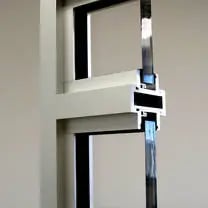
Aluminum Frames
Aluminum framing is ideal for interior storefront systems, interior doors, and windows that need to provide modern-looking bulletproof protection. Aluminum frames are often called “storefront frames,” because they resemble non-rated aluminum framing commonly used in retail entrances. TSS’s extruded aluminum frames (BL1.75 and BL2.5) are tested to UL level 3, while the BL5.5 frames are backed with ballistic fiberglass to provide protection from levels 4 through 8.
All TSS aluminum frames are available in a clear stain or dark bronze anodized finish. You can also request a custom paint color, powder coating, or other anodized finishes to ensure your frame blends seamlessly with the surrounding space.
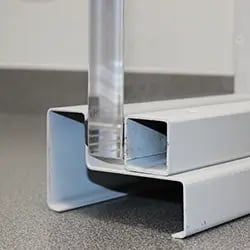
Hollow Metal Frames
The hollow metal frame is constructed of 16 gauge cold-rolled steel and has long been the “standard” form of ballistic framings. The strength of the steel and the hollow design—which can be reinforced with ballistic fiberglass to increase protection level—provides support where rated doors or windows join the structure of the building.
Hollow metal frames have an industrial look that’s easy to blend into an existing steel frame aesthetic. These frames are also durable and easy to maintain, making them a good choice for high-traffic areas or buildings with many users.
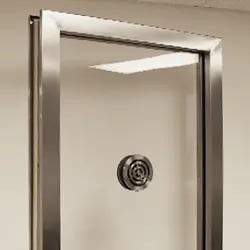
Stainless Steel Frames
Stainless steel frames are a cut above the rest. Stainless steel is ideal for upscale aesthetic projects. Historic government buildings or other institutional settings like banks tend to favor stainless steel frames.
Working with ballistic stainless steel poses a unique set of challenges and requires specialized welding and finishing techniques. If you’re interested in a stainless steel frame, it’s important to partner with an expert like TSS. We have the experience, expertise, and skill required to work with stainless steel frames.
Bullet-Resistant Frame Comparison Chart
Aluminum |
Hollow Metal |
Stainless Steel |
|
|---|---|---|---|
| Applications | Interior and Exterior | Interior and Exterior | Interior |
| Thickness | 1 3/4” to 4” | 3/4” to 2 1/2” | 3/4” to 2 1/2” |
| Protection Level |  |
 |
 |
| Customization Options | Thermally improved with 650 frame | Multiple throat sizes and mounting options | Welded frame only |
Need help finding the right solution for your project?
Get free advice from our ballistic experts.
Bullet-Resistant Frame FAQs
What are My Options for Thermal Frames?
The BL650 Thermal Framing System provides an insulated "thermal break" between the building interior and exterior. Originally developed for areas where extreme weather causes ice buildup on conventional aluminum framing, this option offers a structural framing system that blends with surrounding aesthetics and meets your insulation performance goals by reducing thermal energy loss.
What are My Options for Non-Rated Framing?
There are a few reasons you might want a non-rated frame to accompany your ballistic window or door. In some situations, the style of frame positions the glazing so that it provides sufficient protection on its own. For example, U-channel frames only leave a small portion of the frame visible and it’s thin enough to prevent a bullet getting through around the ballistic glazing.
TSS has non-rated framing options that are compatible with our various bullet-resistant glazing options. Non-rated aluminum or hollow metal framing is typically used for level 1 or 2 windows and is available in custom finishes and paint colors. Please talk with a TSS ballistic expert if you’re considering incorporating non-rated framing into a ballistic system.
What’s the Best Framing for Storefront Applications?
Aluminum framing is the go-to option for achieving a classic storefront look. Its design flexibility makes for a sleek and modern aesthetic. Aluminum is a high-performance solution that increases your options for new construction and retrofits. Field assembly is straightforward, so aluminum storefront window frames can be larger, taller, and wider than materials like stainless steel. Building a twenty- or thirty-foot curtain wall with aluminum framing is no problem.
What Protection Level Is Right for My Project?
Choosing the right level of protection will depend on the end user's needs, threat level, functional requirements, and aesthetics. The good news is that TSS offers framing systems to accommodate every glazing option and desired level of protection. If you’re not confident in making these decisions, our experts are always available to help you better understand your options and which solution is the best fit for your project.
How Much Does a Framing System Cost?
No two ballistic barriers are exactly alike. Creating an accurate framing system estimate is difficult without project specifics.
In general,
- Hollow metal frames tend to be the most cost-effective option. The cold-rolled steel is affordable and extremely durable, making it a good choice for high-traffic areas.
- UL-rated aluminum frames will usually cost more than hollow metal frames, but provide better value because of their design flexibility and sleek aesthetic.
- Stainless steel frames are the most expensive but offer the most elevated, upscale look.
TSS Is Your Trusted Source for Bulletproof Frames
Whether you need a highly-customized solution or already know which type of framing system you need, TSS’s integrated approach ensures every element of your ballistic barrier is cohesive. Trying to decide between hollow metal and aluminum framing? Not sure what option is best for an interior storefront system? TSS experts can help.
A consultation is free, so there’s no pressure when you request a quote or pick up the phone to call. Just send us a message online, or call us at 800.513.1468. We look forward to speaking with you!
